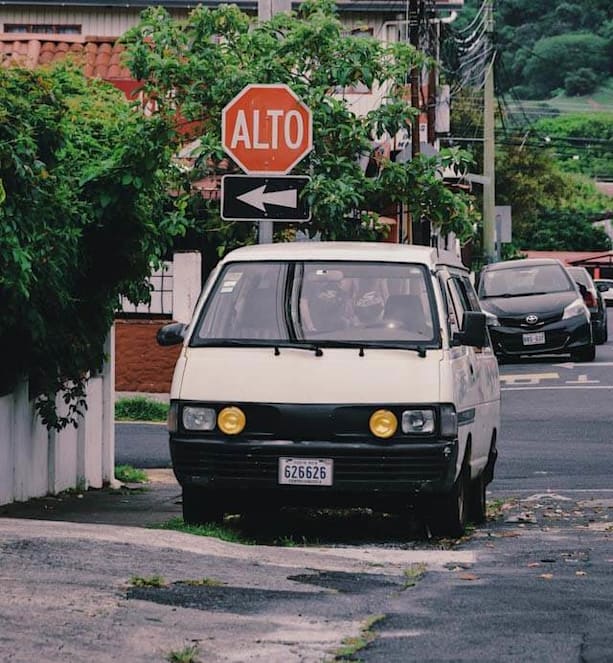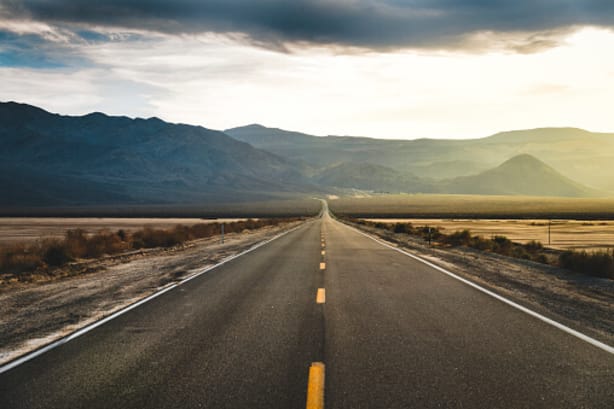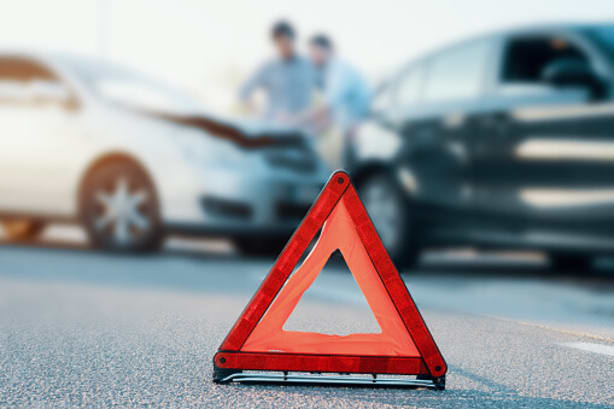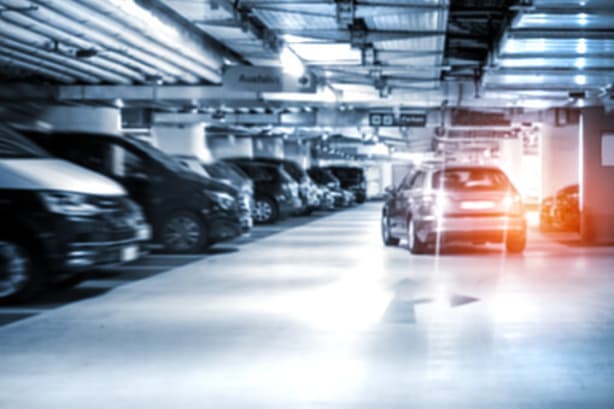About Driving In Costa Rica
Costa Rica drives on the right side of the road (just like USA and Canada). Traffic signs are in Spanish and use the same/similar shapes as USA and Canada (like the red octagon for stop). Costa Rica uses the metric system so speed limits are in kilometers and gas tanks are in liters. The normal speed limit on the highway is 90 Km/h (~55 mph). Foreigners can drive in Costa Rica with a valid original driver’s license and their original passport with a valid tourist stamp. Tourists must have their original passport and valid original driver’s license with them when they drive. They can only drive for as long as their tourist visa is valid. Temporary licenses and paper driver license copies are not accepted. The legal driving age is 18 in Costa Rica. For car rentals, the minimum age to rent a car will vary depending on the agency. Usually it is 21 – 23 years old. Defensive driving is the best way to drive safely in Costa Rica.

Costa Rica Road Signs
All the road signs are in Spanish. They use the same symbols, but it’s always good to familiarize yourself with the Spanish words. Here are the most common signs you’ll see.
- Alto – stop. Is also a red octagon
- Velocidad maxima – maximum speed. Remember they use kilometers so you’ll see KPH
- Ceda el paso – yield. Is also a red and white triangle
- Puente angosto – narrow bridge
- Desvio – detour
- Despacio – slow
- Cruce de monos – monkey crossing (or some other animal, they will put a picture of it)
- Una via – one way
- Carretera en mal estado – road in bad condition
- Puente en mal estado – bridge in bad condition
- No estacionar – no parking
- Curvas peligrosas adelante – dangerous curves ahead
- No hay paso – don’t enter
- No virar en u – no U turns
- Calle sin salida – dead end
- Tarifa liviano – lightweight fare (you will see this at the toll boths)
Highways
Costa Rica has both highways and freeways but they don’t look exactly quite like the ones in the US or Canada. Many of them have only one lane or 1-2 lanes for a short period of time.
The Interamericana highway 1 by Liberia The nicest highway, Interamericana Highway 1 underwent construction a few years ago and now has two lanes in both directions and are very nicely done. Most of the other freeways in Costa Rica have just 1 lane such as Route 27.


Accident
What to Do if You Have an Accident Or Get a Ticket If you have an accident, call 911 if there are injuries and contact your car rental company immediately to report the accident to them. There are also some things you need to be aware of if you get into an accident/incident.
Some people will try to approach and help you but this MAY be a tourist scam. There have been some cases where people act like they’re helping but instead rob the person. Read more common tourist scams in Costa Rica here. The emergency number is 911 and they have an English speaking line.
You can move your vehicle if there is an agreement between both parties (or vehicle and object), if nobody was injured, one of the drivers accept responsibility or if it is necessary to move for traffic.
Laws
Make sure you read through the following information before you start your road trip in Costa Rica.
- Drive on the right and overtake on the left.
- Passing on the right is not allowed
- All occupants of the vehicle should wear seat belts.
- Child’s seats are required for children under 12 or smaller than 1.45m
- Driving under the influence of alcohol is taken seriously. Driving with a blood alcohol concentration (BAC) of over 0.05% is considered under the influence.
- The use of mobile phones whilst driving is prohibited.
- Yellow lines denote areas where you are not allowed to pass
- Driving on beaches is strictly prohibited everywhere, except when there is no other path connecting two towns.
Please make sure that you are aware of all the road regulations before you start driving in Costa Rica.


Parking
In the city, San Jose and the GAM do have official parking lots that are paid and with a guard. I highly recommend to park only in official lots in the city.
If you are outside the GAM, you will notice that a lot of locals park anywhere and everywhere. They’ll park on the side of the road, put on the emergency lights and leave the car running to go to the supermarket and block half the road in the process. This is very common so be careful if you see a parked car with emergency lights. Drive around them carefully.
The traffic police do give parking tickets in the GAM (San Jose/Alajuela/Heredia/Cartago) and it is also normal in Jaco and Quepos.
Try to park on well lit streets and do not ever leave any valuables visible in your car wherever you are in Costa Rica. Always roll up your windows and lock your doors.
You may be approached by a man or woman wearing an orange vest offering to watch your car. They’ll most likely try to charge you for parking in their “area” so you can give them a little tip but do not rely on them to watch your car 100%. Never leave anything valuable visible in your car and always roll up your windows and lock your door.
Contact Us
Free Lawyer Consultation
Address
Marielos Meléndez H. JD LL.D.
Lawyer and Notary / Abogada y Notaria
3335 10th Avenue
Avenue 10 between Calles 33 and 35
100 meters south and 250 meters east from Casa Italia
Next to the Venezuelan Embassy
San José, Costa Rica 10104
Telephone
Telephone +(506) 2224-2800 / Fax +(506) 2225-2909
Toll Free United States / Canada 1-800-378-7542
Lawyer@costaricadrivinglaw.com